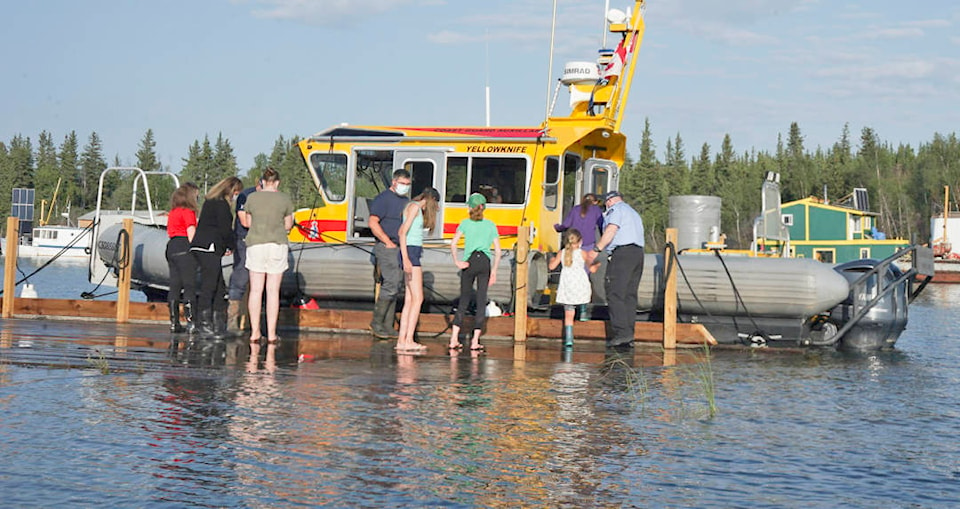Imagine being stranded on Great Slave Lake in a boat that no longer complies with your wishes.
It doesn’t take long when heading out at full sail or with an outboard motor before all you can see is water in every direction.
That’s 27,200 square kilometres of surface area where you could be adrift at any given moment.
Throw some unexpected strong winds into the equation and the result can be downright terrifying.
A timely rescue could be the difference between life and death. In fact, it usually is.
For that reason, we’re grateful for the Yellowknife Marine Rescue Unit, which recently bulked up its resources with a key addition: Rescue 797, a $305,000 search and rescue vessel. Rescue 797 is close to 35 feet in length with two 250-horsepower engines and it cruises at 30 knots.
The new craft was made possible with funding from Fisheries and Oceans Canada and the Yellowknife Marine Rescue Society.
Rescue 797 complements the rescue unit’s cabin cruiser and its aluminum and Fiberglas rigid inflatable boats. Any of them, with one of the unit’s approximately 40 trained volunteers at the helm, would be a welcome sight to boaters who have lost their way on Great Slave Lake.
Yellowknife Marine Rescue Unit, which falls under the Canadian Coast Guard Auxiliary, responds to about a dozen calls for service during an average summer. The volunteers are responsible for the Northern portion of the lake. Not to worry, the Canadian Coast Guard Auxiliary in Hay River has things covered in the south. That unit received funding in 2020 for a new search and rescue boat and related equipment.
A sobering reminder of how dangerous the lake can be came when four fishermen were reported missing on Sept. 29, 2019. They were never found despite an extensive search that lasted weeks. Stacy Linington, 59, from Hay River and Daniel Courtoreille, 51, Michael Courtoreille, 50, and Jason Fulton, 40, all from the Lesser Slave Lake area of Alberta are believed to have perished. Their boat was located partially submerged near Windy Bay.
The circumstances that led to that tragic incident are unclear. What is not unclear are the rules that all boaters should follow when they spend time on the lake, and that means planning for the unexpected.
Before departing, be sure to tell at least one person, preferably a few, where you are going, when you are leaving, when you should be back and who, if anyone, is travelling with you.
Check your vessel carefully to ensure it’s in good working condition. Also, consult the weather forecast and be informed about any possible hazards in the waters you’ll be navigating.
Be certain to have extra fuel, some food and drinking water, warm clothes, matches, a throw rope, paddles, a whistle or horn and a bailer on board.
Because the ability to send a call for help is critical, always have a radio, satellite phone or something similar and make sure it, too, is working properly before you’re cruising.
Finally, don’t just possess a personal flotation device, wear it.
Yellowknife Marine Rescue Unit will be there for you if things go wrong. But give them, and yourself, every chance to survive until you hear Rescue 797 or another vessel roaring to your aid.
